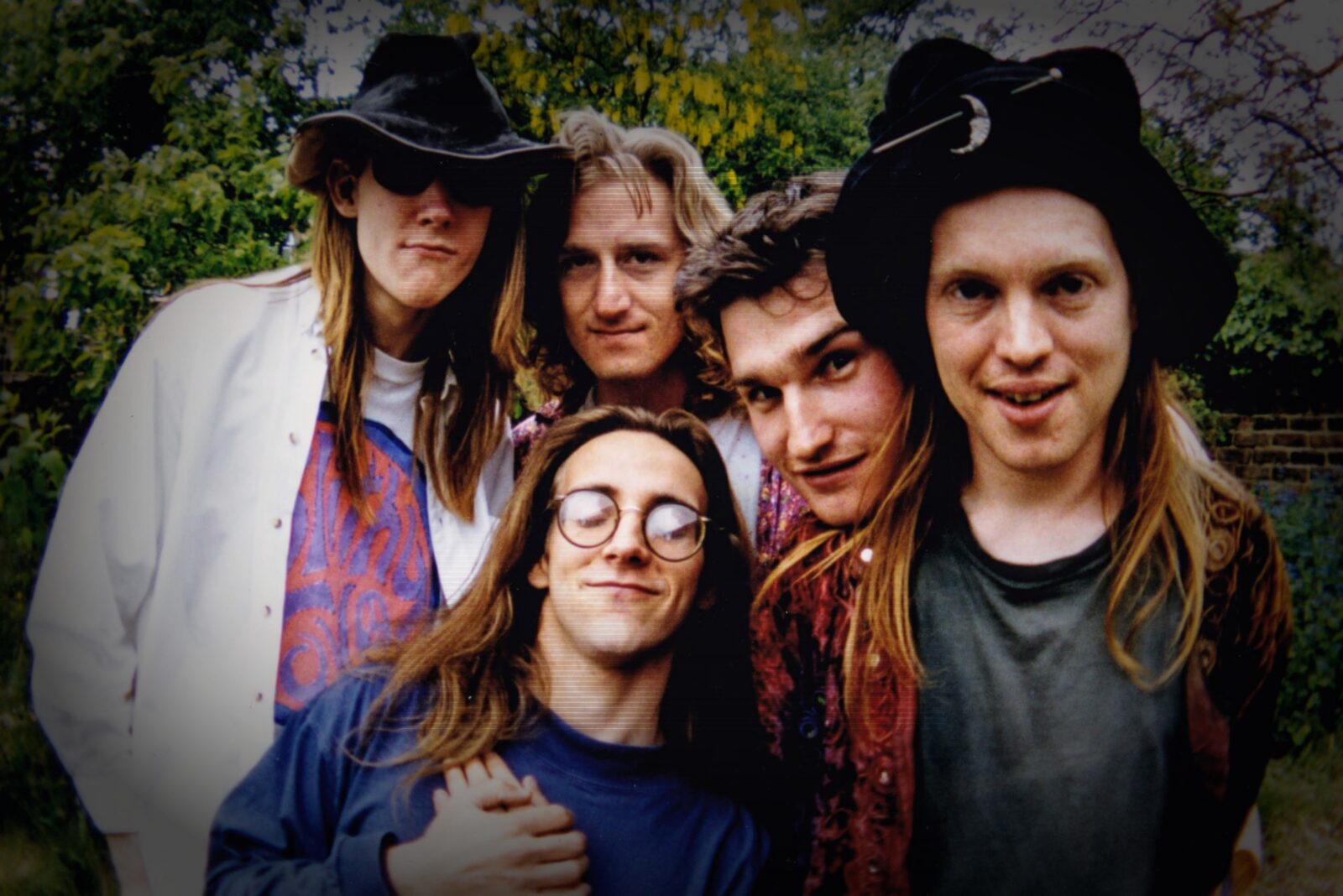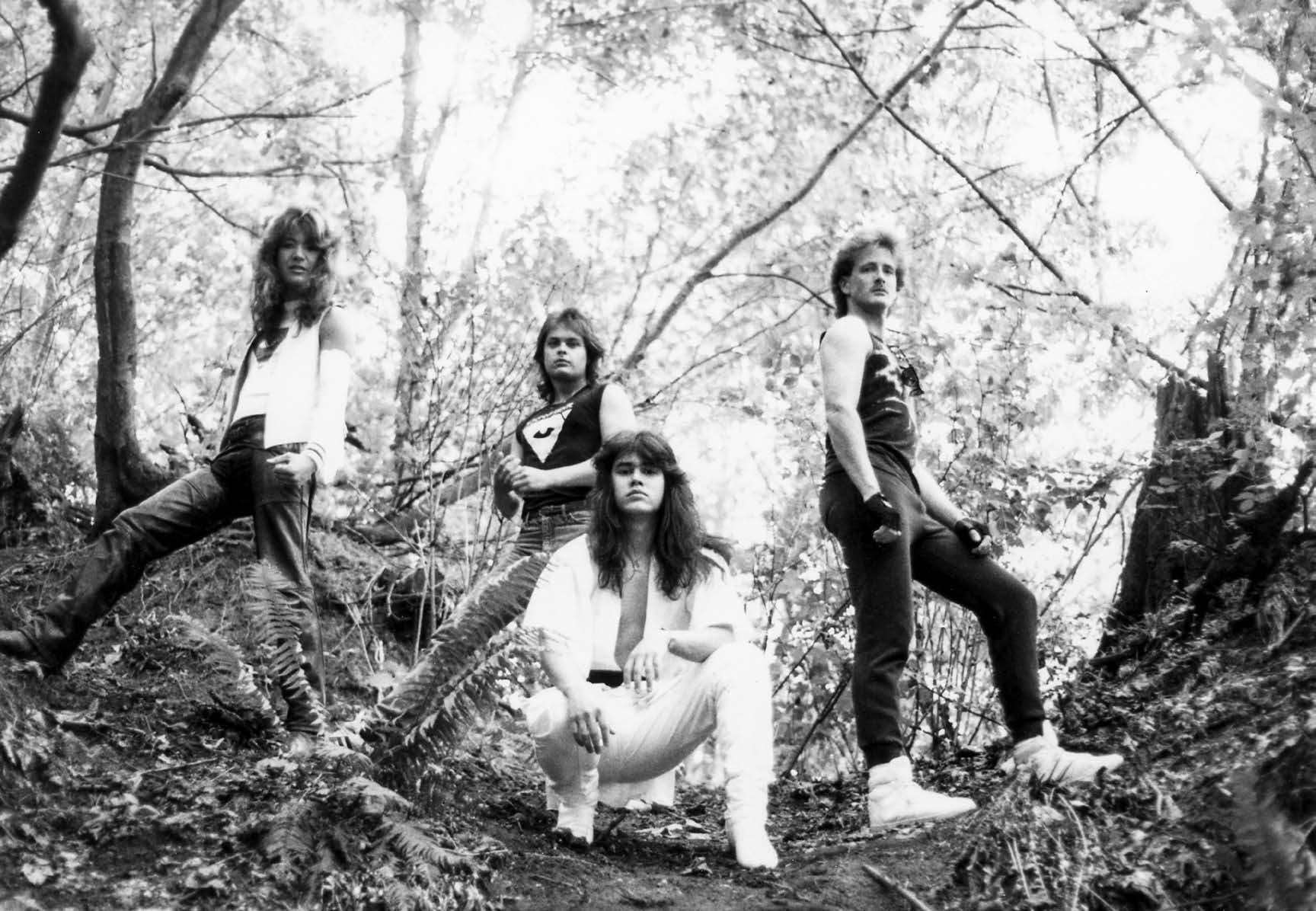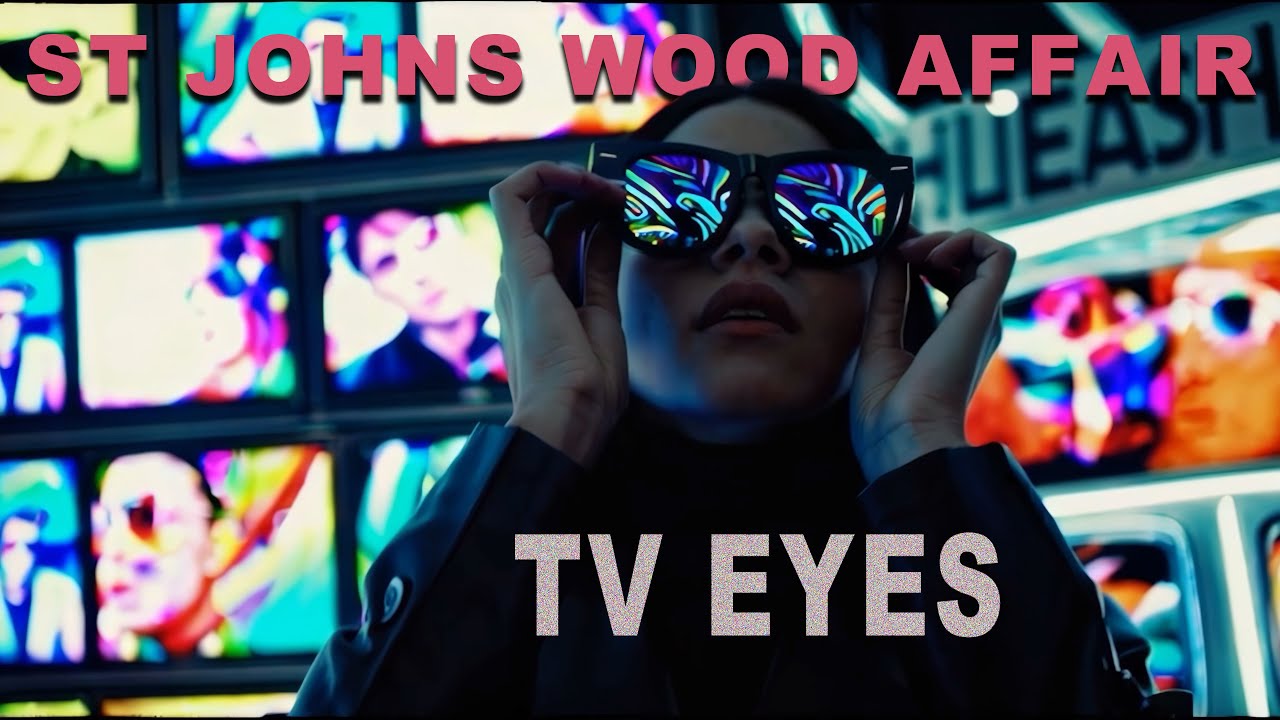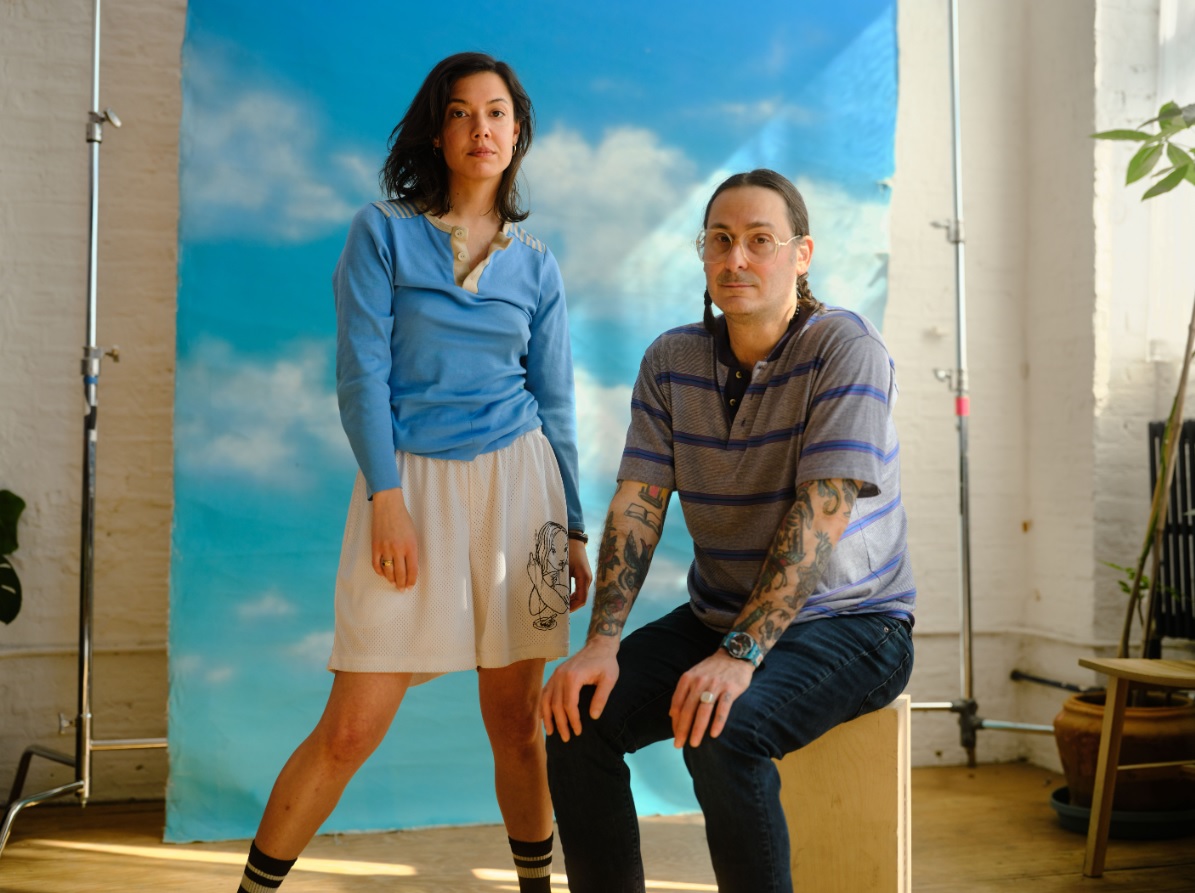Slithey Tove | The Green Ray | Interview | New Album, ‘Big Top’
The Green Ray offshoot album by much loved festival psychsters Slithey Tove. Having played festivals for fifteen years the band with Whaley, saxophonist Aaron Liddard, vocalist Doug Southall, drummer Toby Baron, and bassist Jonty Bankes, finally got into the studio.
The band featured Simon Whaley of The Green Ray and they played a fantastic mix of psych, progressive rock in the style of Caravan and Soft Machine.
“It’s taken a while to put together, but I for one am very glad that it exists at all, particularly for the excellent ‘Amazing Place’ which is the kind of complex, infectious number which would have been the highlight of any live band’s show back in the day, and ‘Road’ which (like several of the pieces on here) has a similar funky vibe to the fondly remembered Welsh band Alcatraz. If you like your festival stage to be draped in funk, jazz and space-rock, or have fond memories of bands of this ilk, then this is the kind of album you’d queue up at the merch table to purchase afterwards,” recalls Whaley.
150 copies pressed on grey vinyl via Sugarbush Records. Sleeve and exclusive insert designed with Dale Simpson.
“Our music aims to take you ‘through the looking glass'”
Would you like to talk a bit about your background?
Simon Whaley: I am from Epping, Essex, the last stop on the London underground and the gateway to Epping Forest – I’m lucky to have both the big smoke and big skies at my doorstep. I was the sixth and last born in my family, 1967 – the summer of love no less. My mother was from Vienna, Austria and my father from Leyton, East London. My family is a very liberal and open minded one full of artists, musicians and teachers. It was a very happy environment to grow up in and influenced my priorities of family, music, art and learning. I have worked as a college lecturer in Film, Media and Music for 25 years, whilst being a performing musician since the age of 16.
How did you first get interested in music and what were some of the very early influences that made you pick up an instrument?
My eldest brother was the late and great bassist, Ken Whaley. He put real strings onto my plastic guitar when I was 5 years old, so the answer is that I was more or less born with a guitar attached! I rarely saw Ken at the time, him being 20 years my older and only visiting the family house at Christmas, but on this occasion in the early 1970s he was practicing his bass in the back room – no doubt prepping for a Help Yourself or Man tour. I stood there sucking my thumb mesmerised by this tall man with long flowing hair, making magic sounds dance from his instrument. That certainly left an impression. My other brother Mick was also a music lover and being 6 years ahead of me, would be playing Led Zep, Nazareth and the like, nourishing my young mind with great rock just before the punk era. In my early teens I loved The Beatles, The Hollies and The Who, then later Hendrix, Cream, Doors, Zeppelin, before turning to Zappa and Gong in my early 20s. I essentially worked my way musically through the classics of the 60s and 70s… just 20 years later!
Were you part of any bands before forming Slithey Tove in late 1980s?
There were many bands in my early teens including The Bats and The Kites, before The Portraits came along – a mod band covering The Yardbirds, The Who and others. We won “battle of the bands” for South West Essex in 1983 and cut a track for the winner’s vinyl called ‘Points of Departure’.
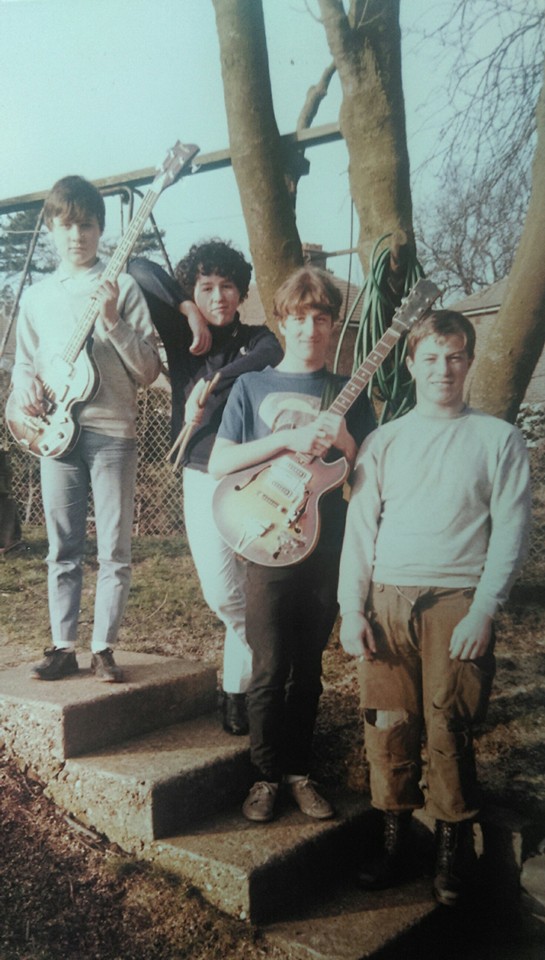
We also played a winner’s gig on Mersea Island in front of a big crowd – very exciting as I was just 16 at the time. Another string of bands followed including LSD (Luke Simon and Darren) now getting more psychedelic, before I was asked by an old school friend Paul Elliot to play bass in his indie-punk band called Pregnant Neck. We made an EP called ‘Pie and Mash’ that John Peel liked and played on World Service.
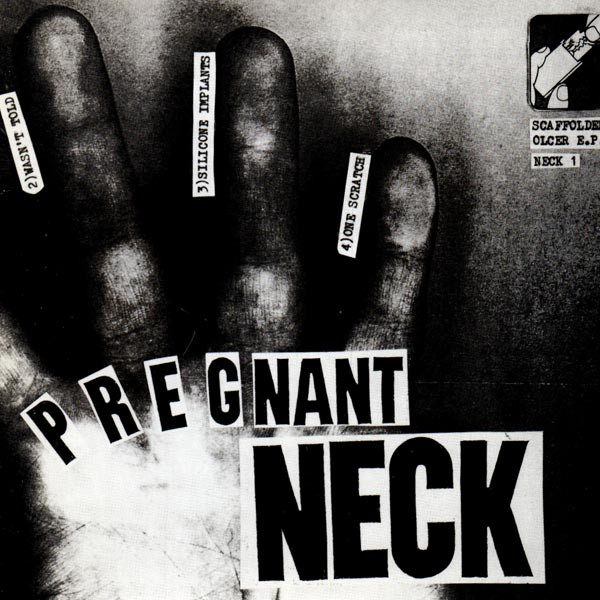
Anthony Chapman (later of Collapsed Lung) joined on bass and I made the switch to drums before going on a couple of chaotic and highly memorable tours of Scotland, where we were loved. On return we made an album called ‘Shenanegan-Esque Rapscalianismz!!’ – an explosive tour de force of buzz-saw pop. It was 1990 when I went to Harlow college and met the guys who would form Slithey Tove. It is also around this time that Ken asked me if I’d like to drum for him, Richard Treece and Simon Haspeck. We became The Archers before changing our name to The Green Ray. I was playing music pretty much full time now – at college, drums with The Ray, guitar with The Toves – the two bands often on the same bill with me switching from drums to guitar. I was also the Green Ray chauffeur, picking the guys up and dropping off after each gig. It was a very busy time.
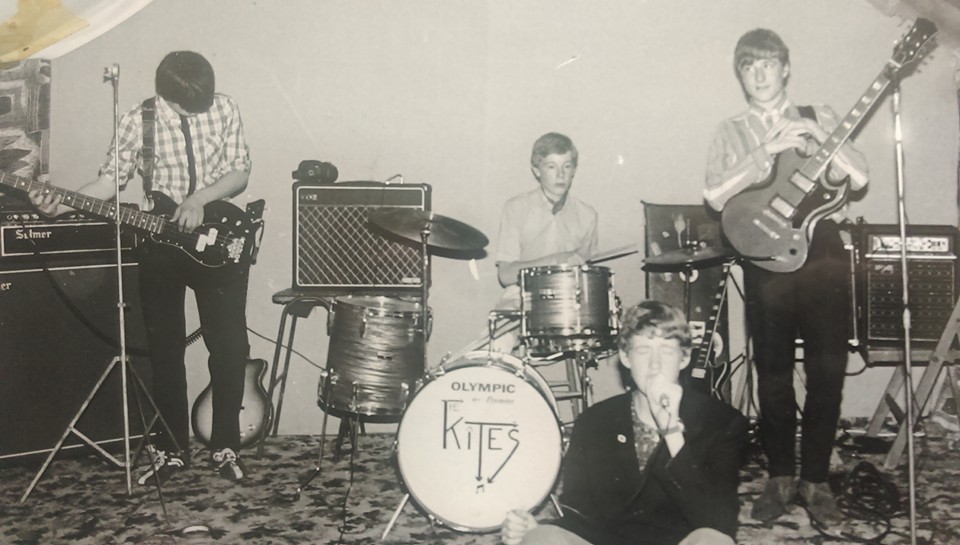
“I admire musicians who take a chance”
When did you decide that you wanted to start writing and performing your own music? What brought that about for you?
Honestly, I always have – making funny recordings using 2 tape recorders as kids, before getting an Amstrad studio in my late teens. I prize original and creative music – regardless of its genre. I see music as an art form and who wants to copy other people’s paintings all the time? I admire musicians who take a chance and do something because they like it rather than sticking to the safety of conventions. When I pick a guitar up, I very rarely play existing songs, instead I “make things up” using my own patterns I have grown familiar with. It’s an organic process in other words and I find songs appear quite naturally. I use Garageband to get ideas down in my music shed, where I have an electric drum kit. I make sketch recordings to show the band my ideas. I’m actually rather shy but performing behind an instrument seems to negate the nerves for me – also being in a band and sharing the performance means you share the weight of expectations.
Okay, let’s discuss the formation of Slithey Tove. How did the members come together to form this group?
I met Simon Burgin at Harlow college in 1989 and we quickly became soul-mates, sharing a love for Gong and Zappa. I taught him to play guitar and he soon became a very able rhythm player to my noodling. One of the first releases is the ‘Si’s Tape’. My mother went abroad for 2 weeks and I was charged with looking after the house. Simon and I turned it into a recording studio using my Amstrad 4-track studio. We created the ‘Si’s Tape’ developing my musical whiffs and knick-knacks. The tape, actually entitled ‘The Lunatic Lunatravel Lunakids’ was a Gong -inspired space-rock adventure story akin to ‘Flying Teapot’, along with cartoon drawings and a simple story about going to the moon and back. The tape circulated amongst friends and musicians. On it were many seeds to what would eventually become the ‘Big Top’ album. We got a band together. College students Aaron Liddard and Toby Baron supplied the sax and drums, with Conrad Winchester taking the bass. Conrad was in a gigging band called Tryptich along with Steve Baker – a talented guitarist who also linked up with us for the odd gig. We knew them as they were neighbours in Ilford, the town where everyone was starting to congregate in student shared houses. By 1992 we had a band ready for action.
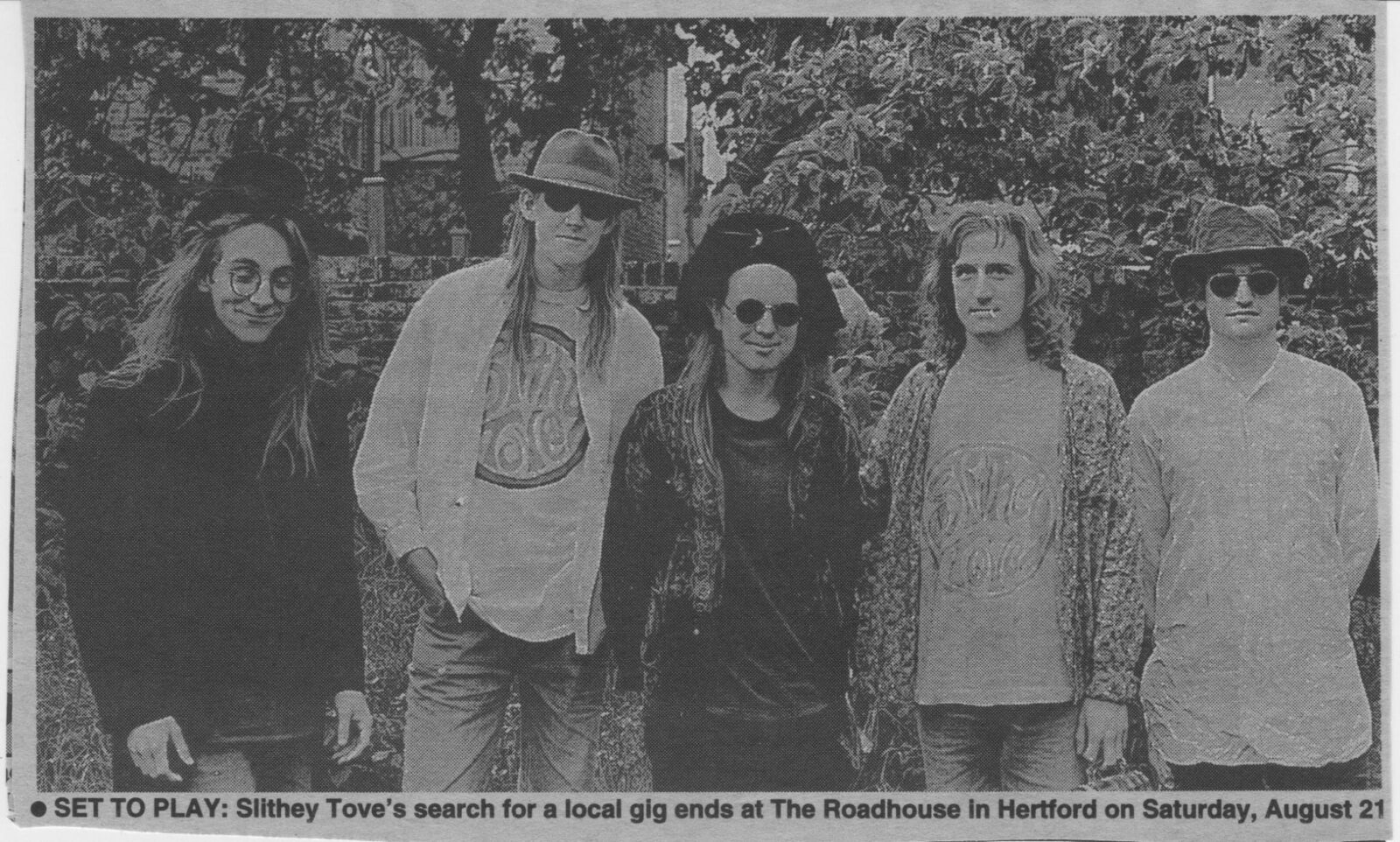
Is there a story behind your band’s name?
It’s from Lewis Carrol’s nonsense poem Jabberwocky that was included in his 1871 novel ‘Through the Looking Glass’. The stanza that the band’s name is from is as follows…
’Twas brillig, and the slithy toves
Did gyre and gimble in the wabe:
All mimsy were the borogoves,
And the mome raths outgrabe.
It’s relevant to us and our music for its playful and ambiguous nature, with clear psychedelic connotations. Our music aims to take you “through the looking glass”. According to Humpty Dumpty (a character from the book) the toves are something like badgers, they’re something like lizards, and they’re something like corkscrews…making nests under sun-dials and they also live on cheese. I’d say this is an apt depiction of the band members and our student lifestyle in the early 90s.
“Long jams, sax and guitar duals”
Where did you rehearse early on and how did the lineup change during the years?
We would rehearse anywhere it was free to do so at first – various bedrooms and living rooms. We did have use of the Harlow college facilities initially, then we used class rooms in the University of East London where I was studying from ‘93. The Labour hall in Ilford that did a cheap deal. Also, Toby rented a bungalow in Essex that was an excellent place to make a lot of noise. The original line was myself (guitar & percussion) Simon Burgin (Vox, guitar), Aaron Liddard (sax), Conrad Winchester (bass), and Toby Baron (drums). This was the band that played festivals and early Devon parties and created the spirit of the band’s music – long jams, sax and guitar duals – Burgin was a soft soul and humorous front man, telling whimsical tales using Zappa’s accent. But Simon lost his confidence in singing and it was then that our fan and house-mate Doug Southall joined in ‘93. The band then became tighter and more about impact. He had a powerful voice that was rock though and through. We also had Toby’s friend Dave Reed join on percussion. This seven-piece band could now create a wall of sound which could take the music in any direction. We became a “show” rather than a jam band with tight syncopations and arrangements so rehearsed we could play them in our sleep.
By the second half of the decade the band started to fall apart – Aaron went to study in Manchester (we followed him up and played a few gigs there but it couldn’t last). Conrad moved to South London and made a new network of friends. The band became a more compact group – now called The Toves, Reed was gone, Burgin moved to bass and we carried on for a few gigs playing as a four-piece. We aimed for a more chilli-pepper groove and it wasn’t bad – but it wasn’t the same. Simon and I put all our musical energy into The Green Ray by this point. Then in 2000 Simon Burgin tragically passed away from a brain hemorrhage and both the Toves and Green Ray were shelved for some time. Eventually, with Aaron back in town, we decided to play again for fun. We were joined by Toby’s regular bassist in his function bands, Jonty Bankes – from The Ukulele Orchestra of Great Britain – an accomplished bassist and pitch perfect whistler. I remember playing The Green Fair festival in Valentine’s park, Ilford and a gig supporting The Green Ray at the wonderful, and now gone, Plough in Walthamstow. A lot like old times but without the tasteful rhythm guitar of Burgin filling the middle ground. However, bigger things were calling and Toby went off to drum with Ray Davies before moving to Australia and Aaron started playing with stars like Amy Winehouse and Beverly Knight. It was at this point that we decided to record the songs that would eventually become ‘Big Top’. The band is still, in theory, existing. We’ve never actually split up. In fact, we played at a birthday party weeks before lockdown in February 2020. So…you never know.
How do you approach songwriting? Is it more of a jam session or are you carefully preparing material at home?
I tend to create riffs and segments on guitar. That’s why so many of the Tove tunes are collages of differing parts. I put bits together. Occasionally I have a whole tune pop into my head as if by magic. That is a wonderful thing because it can be lucid – as if it had already been recorded and I’m hearing the band play in my head – bass, drums and all. I never start with lyrics, in fact I tend to leave that to others if I can. Even though I played drums in The Green Ray for over 2 decades, many of the musical arrangements were mine – ‘Swedish Detective Move’, ‘Swaine’s Green’ are a couple of examples of my music that Ken wrote lyrics for. I am proud of the lyrics on ‘Big Top’ – with some help from Doug to make them his own of course. ‘Carnival’ and ‘Bobble-Hat’ are not too shabby lyrically. ‘Grasshopper’ came from a poem I wrote about London. I try not to be possessive of my material, it’s important to give up ownership and let the band members do their thing. Green Ray collaborated with Martin James Gee who is a wonderful songwriter. He tends to be rather deep and poetic in his compositions and it’s my job to add the groove and upbeat musical ideas. We have a great relationship and are usually on the same page.
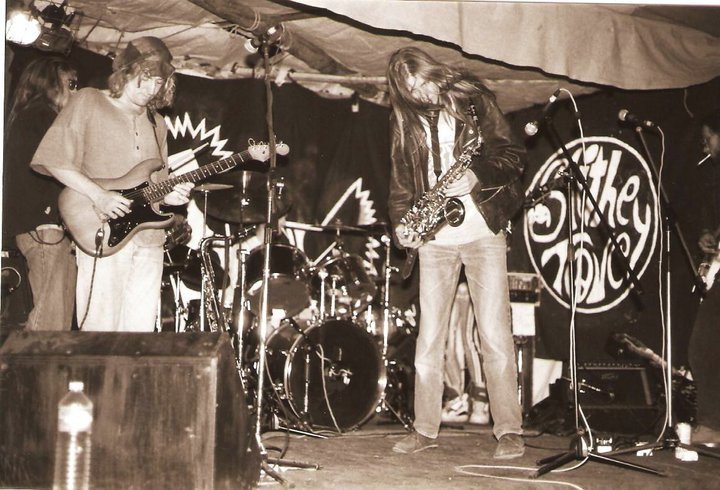
Improvisation was a big part of your band…
At the heart of it I love jazz and blues and innovation. Both Slithey Tove and The Green Ray are essentially about musical exploration over a rock/blues base. My brother Ken was always searching for “that note” on the bass and I also value “improv singing” on guitar over “planning” as such. Once you have your scales under your belt, you no longer think about it – the muse takes over and there is an element of unconsciousness about it. A band should be able to play for 10 minutes over a single chord and explore the dynamic range and harmonic possibilities. This is something I learned with Ken and Richard Treece, as well as playing with the super talented Aaron Liddard. These are players that search and take chances, never playing it the same way twice. I like music to be alive and in the moment. If I have to choose a “take” to be included in a recording, I’m often attracted to the “odd one” – the take with the least expected phrase. I like guitarists that make you raise an eyebrow.
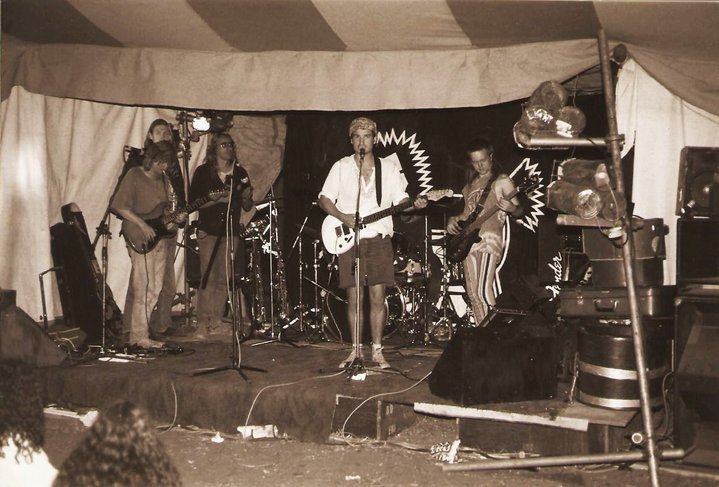
What were some of the shows you played?
In the 90s with Slithey Tove I played the Avalon stage at Glastonbury (the hippy field) Norfolk festival of the Sun, Cambridge’s Strawberry Fair. We also played at the Army and Navy in Chelmsford supporting Doctor and the Medics, The Boat Race in Cambridge supporting The Crazy World of Arthur Brown, among others. But I think the most memorable gigs were the squats and huge parties where we could play unlimited by time and constraints. With The Green Ray I have also played Glastonbury (in mud and rain), The Big Green Gathering near Bristol as well as many pubs and venues around London, including the 100 club with Wishbone Ash. Some of our largest audiences were at the various Man Convention gigs in Wales and London. The Ray have been joined by some great musicians, including Deke Leonard, Robyn Hitchcock, Nik Turner from Hawkwind, Nick Saloman (Bevis Frond) and Barry Melton (Country Joe and the Fish) who have all done stints with us. I look forward to playing with the Great Barry Melton again this summer.
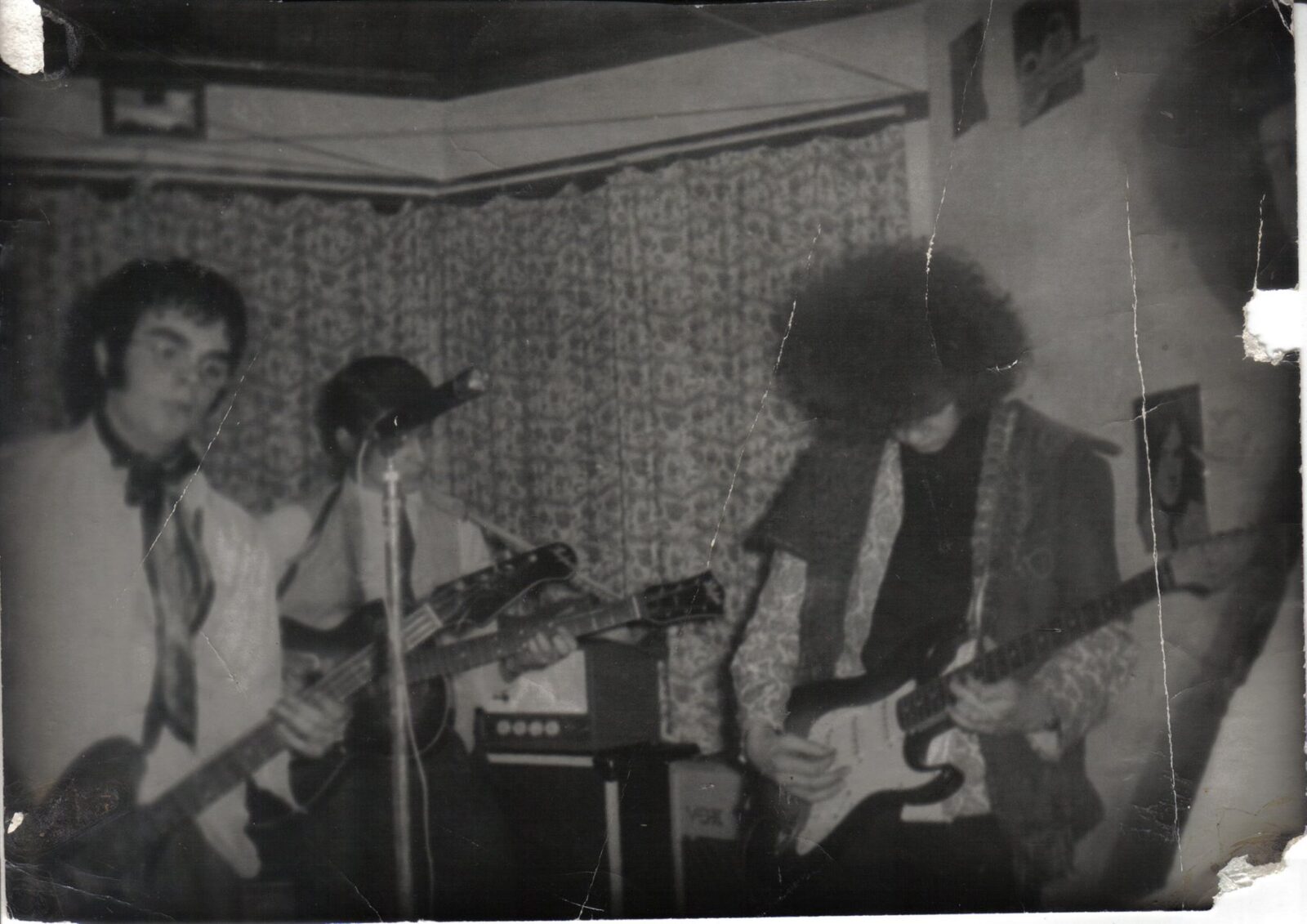
What’s your involvement with The Green Ray?
I have been in The Green Ray since 1990. Ken organised the band together with Richard Treece to give his friend Simon Haspeck a chance to play in a band. What started as a bit of Sunday afternoon fun soon turned into a performing prospect. I was a pretty average drummer to start with, but some of my musical heroes are drummers and I am enthusiastic. I also played some rhythm guitar on the various recordings – neither Treece or Haspeck were particularly strong at keeping a beat down, so that often fell to me. Slithey Tove and The Green Ray were sister bands in the 1990s, often playing the same gig, Simon Burgin was a full-time member for a few short years and Aaron Liddard is featured on some of their tracks. The band has been through regular changes of line ups due to the passing of Simon Burgin, then Ken Whaley, Richard Treece and more lately Jeff Gibbs. I am the only remaining original member now. Richard Treece passed away during the recording of ‘Half Sentences’ and I semi-reluctantly stepped in to fill in the missing parts. But the results were good and it was the spirit of the band – I had played with Treece for 25 years after all. We then played a memorial gig for him and I made the switch to guitar for the full set. We decided to carry the band on. Now I write the material with Martin James Gee and the band has kept the original vibes whilst becoming a little more structured. The 2019 album ‘Five Points of Light’ is representative of this new line up with Gee and myself at the helm and I’m very proud of what we managed to pull out the hat. I’m aware of the band’s special history and am privileged to have inherited its music and fans.
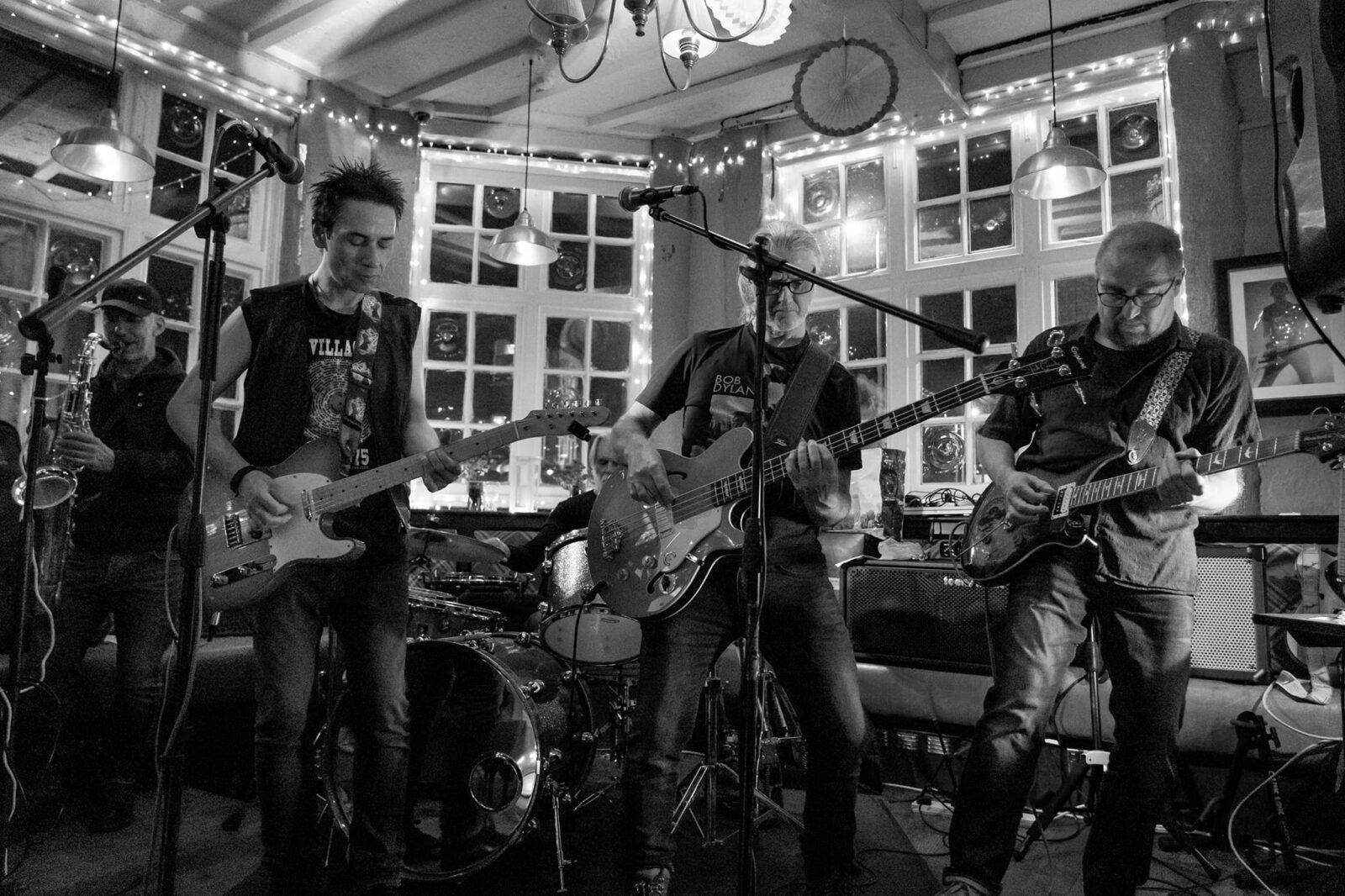
Tell us about those mushroom parties and the free festival scene in the early 90s.
There were some great parties in Devon in late Summer/Autumn during the mushroom season. I do remember the vats of bubbling tea on the stoves and the wonderful hairy people having a great time; a perfect environment for psychedelic music, with the doors flung open into the garden, dancing and laughing. Actually, many of the pubs in Devon at this time were little different to the house parties. We’d play in the skittle allies and the closing times didn’t seem to exist. There were some great biker-pubs too and we would sometimes sleep on the stage we had just played on. The Criminal Justice Bill of 1994 spelled the end of the rave scene that Acid House had ignited in the 80s. Slithey Tove were most active between ’92 and ’94 so we were right in it. I remember playing at a street squat in Leytonstone. The street was called Clover Road and it had been made empty due prior to demolition for the new A12 urban highway through East London. The whole street had been turned into a living protest, with every house occupied by squatters and hippies. It was a festival that lasted months with music, fires, art and parties. Absolutely fantastic. Slithey Tove played in the street on the back of a flat-bed lorry to hoards of tie-dyed hippies in the middle of Leytonstone. We knew the tide had changed and the counterculture was losing when we were arrested in Southampton in 1994 for travelling in a convoy and possessing PA equipment and a generator. I think the charge was “conspiring to organise a festival”. Well, we were hoping to play at one rather than organise it. We spent the afternoon in Southampton police station, searched, questioned and detained before being escorted out of Hampshire by police motorbikes.
Ian Abrahams & Bridget Wishart wrote a fantastic book about the scene, ‘Festivalized: Music, Politics, and Alternative Culture’. I would love it if you can elaborate on the scene from your own perspective?
I was in my early twenties during this time and it was the best time of my life. We revelled in the alternative culture of the early 90s. We did everything in large groups of people – artists, musicians, wasters, et cetera. We lived together, travelled together and partied together. I left home to live with my girlfriend in Ilford, East London. There were several student houses and squats in the area and we essentially made the town and parks our collective home. I met some wonderful people. There was a lot of love for each other and a lot of fun to be had. In this environment the music happened naturally and without ego. We honestly played in a band because “that is what we did” and never because we wanted fame or fortune or worried about our image. That was part of the alternative scene – music and art was a lifestyle not a profession. This was the pre-digital age and as such untainted by concerns about self-identity and “likes” et cetera. It was about experiencing live music and real events. We were the generation who grew up in Thatcher’s 80s and we were implicitly anti-Tory and anti-establishment. My memory of the 90s is also one of the breaking down of some old norms and prejudices, including sex and race. It was an optimistic decade and a time to open one’s mind and create a positive community of diverse peoples. This is what the indies, punks and hippies and other alternative sub-cultures had in common – a common purpose to forge our own way of life and resist boring norms.
The festival scene at this time was so different to now. Less commercial, less expensive, less organised. They were a lot more “of the people, for the people” – I may be being a little romantic but the name “free-festival” isn’t just about the price to get in, it’s about the experience of being there too. For example, in 1992 when Slithey Tove played Glastonbury, we took our own tarpaulin and diesel generator on site. We set up a makeshift stage by the thoroughfare between the NME and Pyramid stage. One of my most memorable gigs was playing there, with the generator whirring, the blue tarpaulin swaying in the breeze and the band playing for hours in the sunshine to people who’d decided to chill and listen on their way through. Can you imagine this scene in today’s Glastonbury? A little anarchy was a good thing back them. There was typically a “blaggers” stage where any old band could get up and have a go. Another fondly remembered gig was on such a stage at The Norfolk Sun fair in ’93. We arrived on a Thursday night to play the main stage on a Sunday, but hundreds of people were already “up for it” so we “blagged” a 3-hour improvised set to a raucous crowd.
What about the use of psychedelics? Did that have any impact on who you became as a musician?
I think the psychedelic scene is one that naturally evokes drug use and the doors opening to new ways to perceive the world and one’s place in it. I have gone through all the typical youthful experimentations and to some of my friends the drugs did become central to their lifestyles. Psychedelic music is metaphoric of the trip and hallucination and you hope your music enables listeners to go on one with you. Hence the use of reverbs, echoes and effects to give a sense of the transcendental. However, playing music is better done sober in my opinion. Playing in a band is work as well as play. There has to be high levels of tolerance and togetherness to get it together, plus you need sober ears to listen to what everyone is up to and respond. It also helps to remember what you’re doing! Perhaps a way to think about psychedelics is that music itself is the ultimate drug – it “is” the psychedelic. It affects your mood and can take you to exotic mindscapes – yet has no comedown!
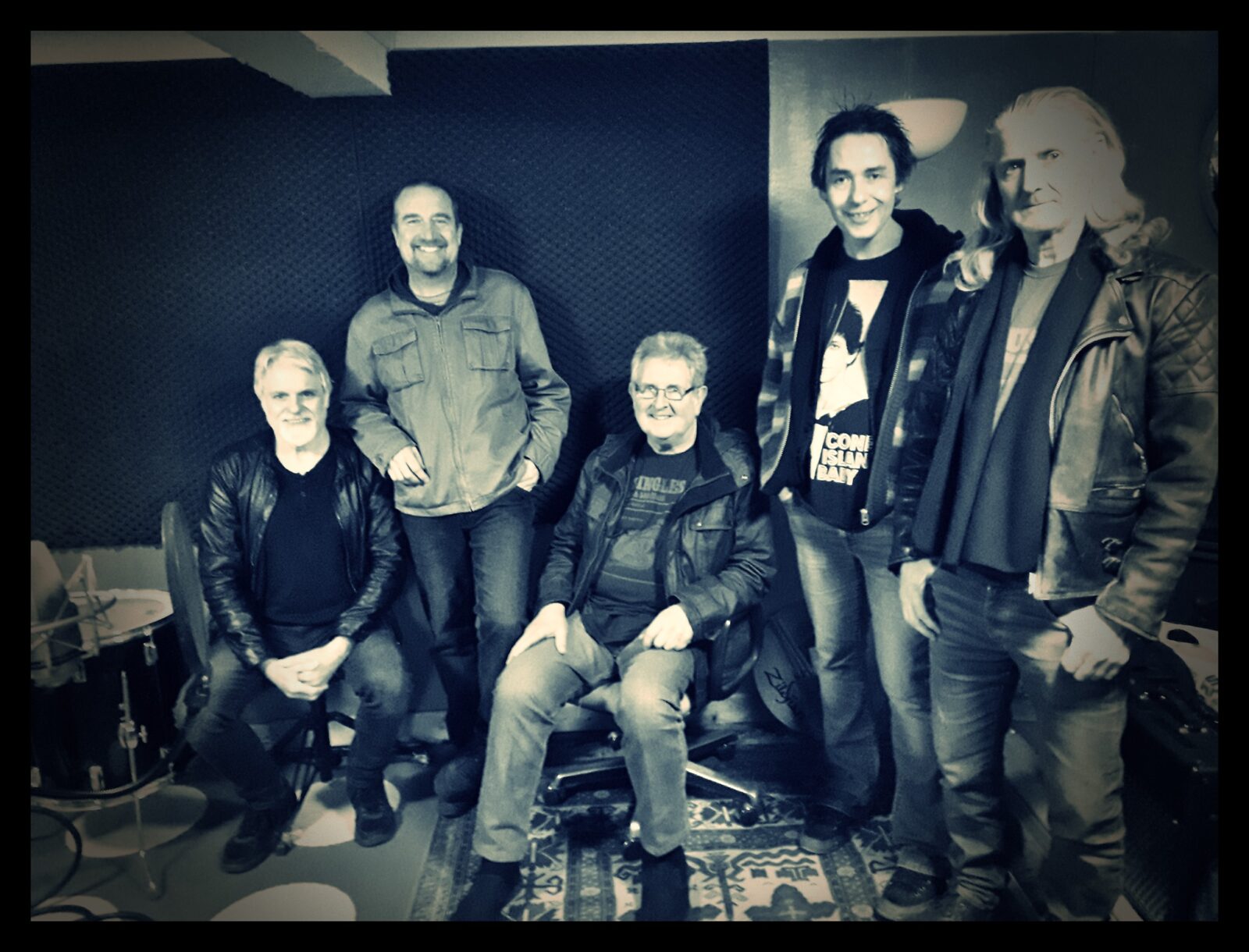
Sugarbush Records released a very exciting album containing the work of your group. What can you tell us about the material on ‘Big Top’?
As the song ‘Carnival’ says, the concept of ‘Big Top’ is to invite the audience to “put their heads into the mouth of curiosity”. The album is an “Amazing Place” of the bizarre, weird and wonderful. The vinyl album has 11 tracks on it out of the 13 the band recorded in total (all 13 are available on streaming services or to buy on CD from Bandcamp or Reckless Records). The aim of the recording was to take songs from our old gigging set and convert them from the longer rambles of jamming and extended solos to a more condensed and produced form. I deliberately wanted to step back from guitar solos and introduce the various horns, keys and brass; like the fuzz trombone on Carnival or the beautiful piano on Pure Apple Juice. The album has many moods and voices. It has some softer moments but is more often highly energetic and buzzing with explosive moments. Just like the circus ‘Big Top’, we wanted to give the listener a diverse range of acts with plenty of oohs and aahs. The band worked to develop my original material into the finished form. A good example is ‘Pure Apple Juice’ and the piano solo. In a moment of inspiration we decided to lengthen each break by 2 beats for Pip Allen to improvise over. So the first break is 6 beats long, then 8, 10, and finally 12. It wasn’t recorded like this, but re-edited to suit. So, the studio was an essential instrument in the music. I think the only song that was recorded live on drums, bass and guitar was Road. All over tracks had the drums down first and built upon.
Can you share some further details on how it was recorded?
The band went to Bentham Farm studios in Wiltshire for a week to sort out arrangements and essentially get the drums down. After that we took the rushes to Black Dog studios in south London. At the helm of production was dear friend Sean Genockey who just happened to be an experienced and highly regarded sound man who has recorded many household names. He worked at “mate’s rates” which I’d say we pretty much exploited with our demands for more this and less that over the many months of whittling and re-recording. The project became a pet hobby for us and I think we really didn’t want it to end! The end result is a punchy production and I think the care and attention to detail is not lost on the listener. There’s a lot going on.
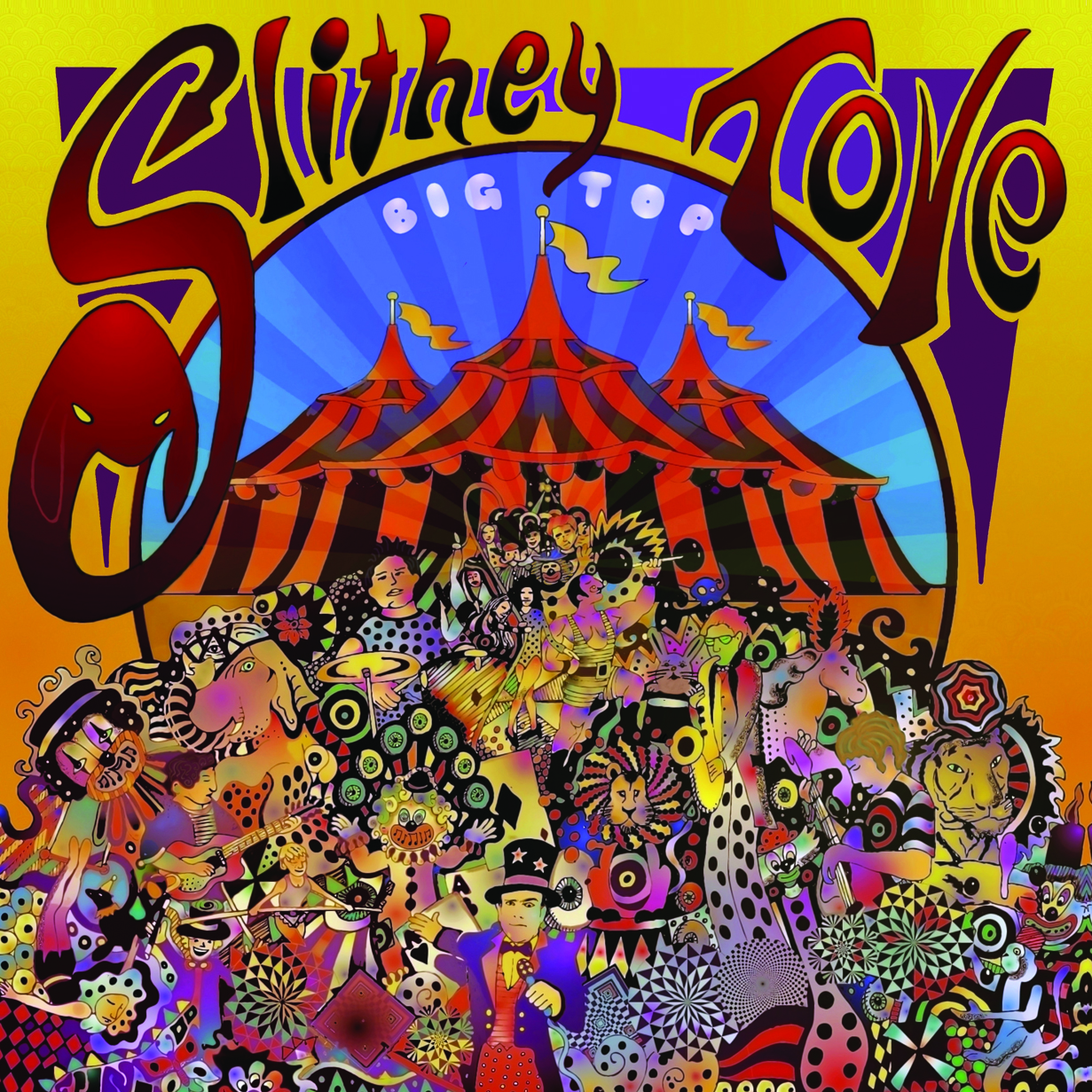
Would you please speak to your guitars and the effects pedals you employ?
I’m guilty of having too many guitars! The old faithful throughout most of my playing life has been my honey-coloured Levinson Blade RH2 Classic, which is a custom Strat that has humbucker, passive/active and boost options. It’s wonderfully versatile and can emulate the Fender as well as Gibson sounds. I’ve had this since 1991 and it’s rather worn now. More recently I use a PRS SE Standard 24 which is now my go-to guitar for The Green Ray. It is a great gigging guitar for its playability and excellent tremolo system that actually stays in tune. I have also acquired a Sire Larry Carlton H7, which is a high-quality Gibson 335 copy. I use this for the more mellow and bluesy moments. You can now buy excellent guitars for around the £500 mark – no need to bust the bank. I have a Boss pedal board with delay, chorus and a phaser. I also use a compression sustainer and an auto-wah. The king of all pedals is my Cry Baby wah wah – where would we be without one of those?
You’re still very active with The Green Ray.
We were called The Archers when we formed, releasing the 12” EP ‘The Green Ray’ in ’93 on Shagrat Records. Side one was a Don Cherry cover – ‘Brown Rice’, with a couple of typical studio jams making up side B. The music is spacious, fragile and rather undisciplined. Then Simon Haspeck left the band to recover from a motorbike accident.
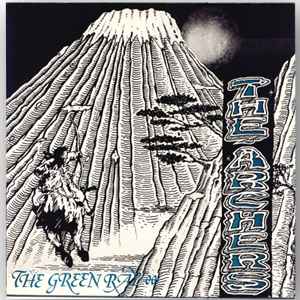
In came fellow Tove Simon Burgin, who brought new energy and ideas to the band. We changed our name from The Archers (too many comments about the soap opera on Radio 4) to the name of your first album – ‘The Green Ray’. The name comes from the French film by Eric Rohmer – it refers to the ray of hope given by the green optical phenomenon at the end of sunset, sometimes called a green flash, which is shot at the finale of the film. Next EP in ’96 was simply called ‘The Green Ray’ – four tracks recorded over the previous couple of years -released on CD on Soft Cloud/Father Yod.
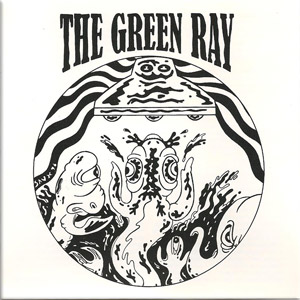
Three of these tracks were also released on green vinyl under the name ‘Sighs, Whales and Trees’ on Shagrat Records. The title refers to the band member’s names. The 4-song CD version was also re-released on vinyl by Sugarbush in 2020, along with ‘Live At Sol Party’, a six-song compilation vinyl of the two times we played the festival.
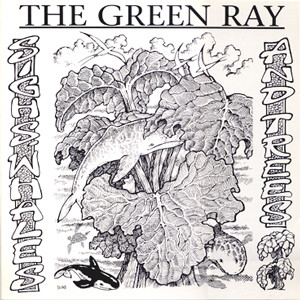
Then after Burgin’s sad passing and the return of Simon Haspeck, the band was supported by music promoter Jeff Gibbs, becoming regulars at the Plough in Walthamstow and recording a couple of CD albums at Antfarm studios via Jeff’s Senza Tempo label. In 2004 was the 8-track ‘Fragile World’ and the 10-track 2006 ‘Back from the Edge’.
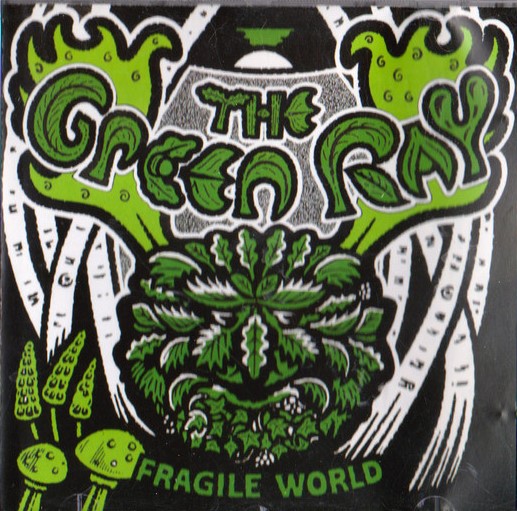
Some great tracks here, but in my opinion the production didn’t do them justice.
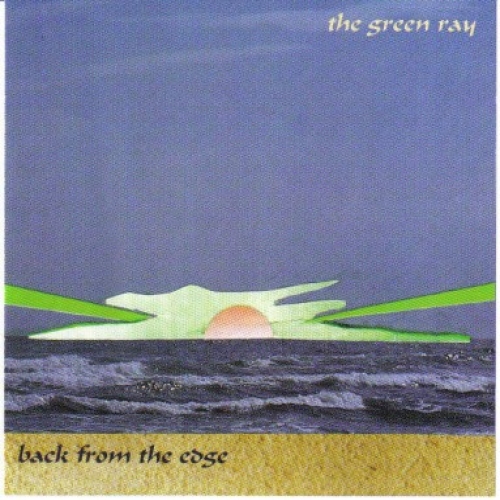
A little rough around the edges. Martin and I are considering re-mastering them in the future for vinyl release. In 2008 we released ‘The Green Ray with Nick Saloman – Classic Rock Club, Cheshunt’ – a live 9-track CD with the Bevis Frond front man and friend sparring with Treece.
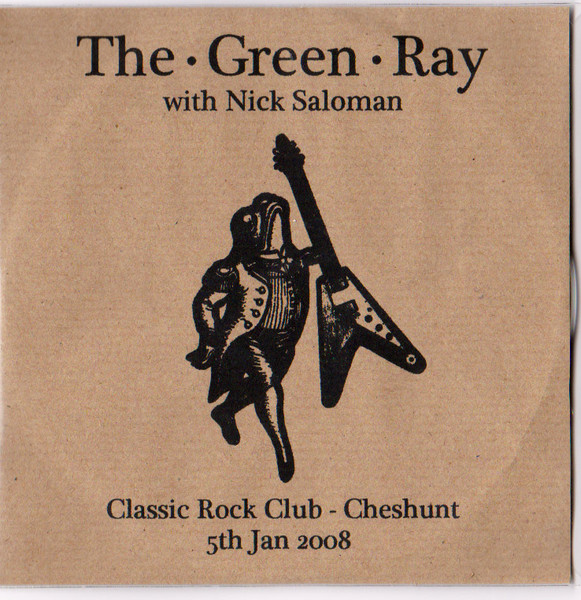
It was the late 2000’s after these albums that this version of the band peaked. I don’t think Ken or Richard played better than those heady nights in The Plough when the band went on automatic and could soar and weave. I’d even say I could hold my own on the drums by this point. Great times. Into the next decade and the sad passing of Ken Whaley in 2013. During this time, Simon Haspeck faded off from the band and in came Martin James Gee on guitar/vocals. Jeff Gibbs had been covering for Ken and naturally took the bass part. The band survived. In 2017 we released ‘Half Sentences’ on Sugarbush.
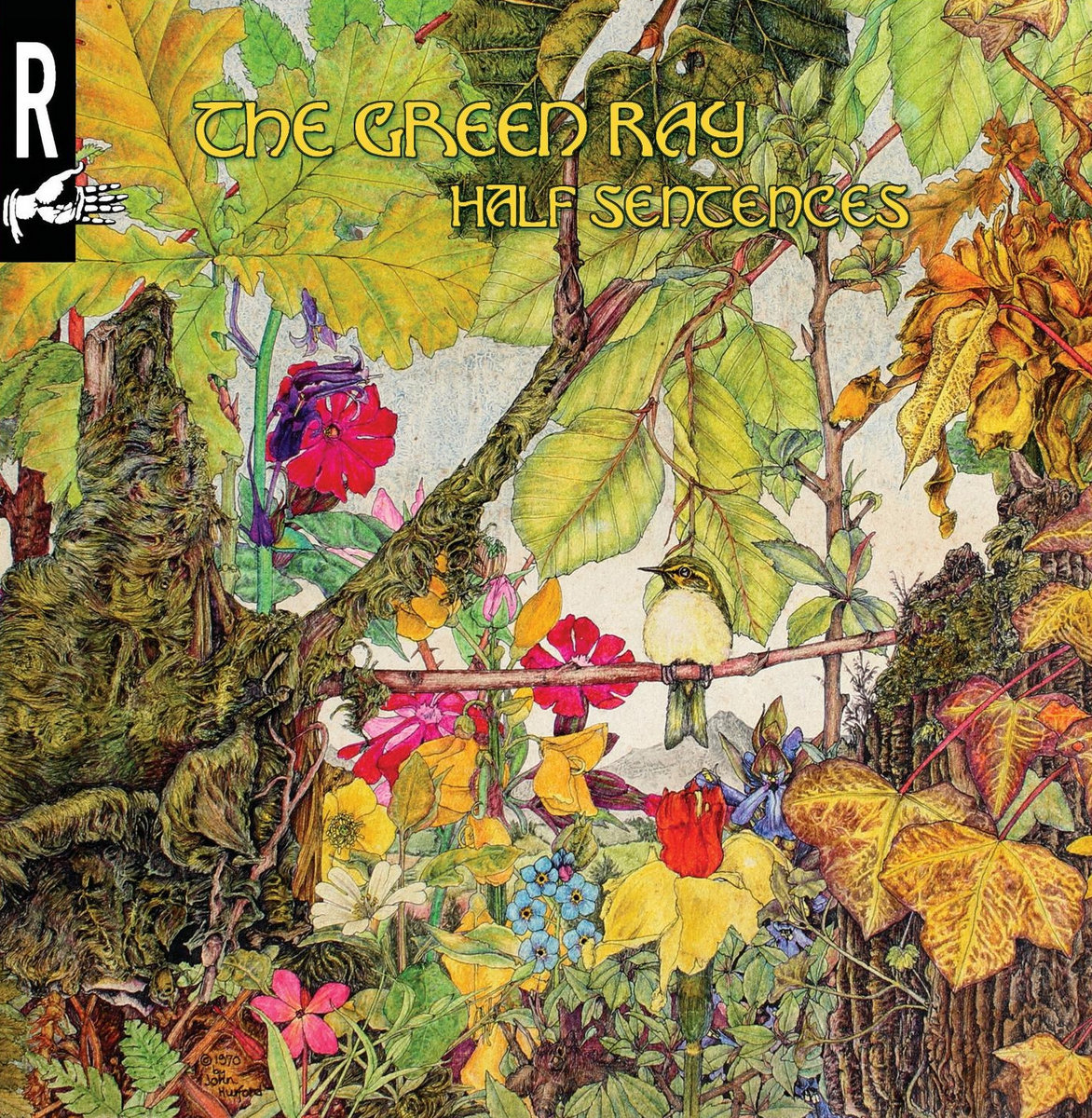
This was the transitional album as Richard Treece passed away at the beginning of recording in 2015 and I stepped in to complete the guitar parts. Marc Callum then joined the band on drums and we carried on. The band survived. Next, we recorded a John Martyn cover (‘Dusty’) for Fruits De Mer’s triple album ‘The Three Seasons’, a celebration of psychedelic music. Then Jeff Gibbs sadly passed away in 2018 and in came Dave McKenzie to fulfil bass duties. The band managed yet again to carry on. I now found myself at the helm along with Martin, trying to navigate the choppy waters after losing such wonderful people and musicians. Our next project was ‘Five Points of Light’ in 2019 on Sugarbush.

This was a turning point in that we found we could write songs together and with Martin in charge of the production, we could be successful. This album did very well and got critical acclaim. It’s one of the things I am most proud of. So the band has survived the deaths of four members by a quite natural carousel of musicians jostling to take the positions. I think of The Green Ray as an idea, a vibe and sound that exists beyond its personnel. I once asked Ricard Treece “when will it end, do you think?” and he replied “that’s up to you Simon”.

What currently occupies your life?
My “proper job” is a college tutor, which I’ve been since the age of 29, teaching Media, Film and then more recently Music Performance and Production to teenagers. I now find myself back at Harlow college where I first met the guys from Slithey Tove one, a course very similar to the one I now help run – full circle! I teach part time to balance work and my own creative projects, long walks and trips.
Any future plans?
Post-Covid, The Green Ray have just got going again. We plan to record another album this year, hopefully out by next. It is also possible that Slithey Tove could record some more. Digital recording technology has come so far now that it’s relatively cheap to make a decent recording yourself. The lead guitar parts on ‘Five Points of Light’ were recorded in my bedroom and mailed to Martin at Green Ray HQ. I love that – no pressure and no audience whilst you record. That actually makes the outcome better in my opinion. So more music to make and more gigs to play…
Let’s end this interview with some of your favourite albums. Have you found something new lately you would like to recommend to our readers?
I find myself listening to Steely Dan a lot lately! I’ve just received Donovan’s Brain’s new release ‘Sandbox Shadows’ (2021). Ron Sanchez sent it to me as a mutual exchange for ‘Big Top’ and it’s a great psychedelic outing on 2-CD’s.
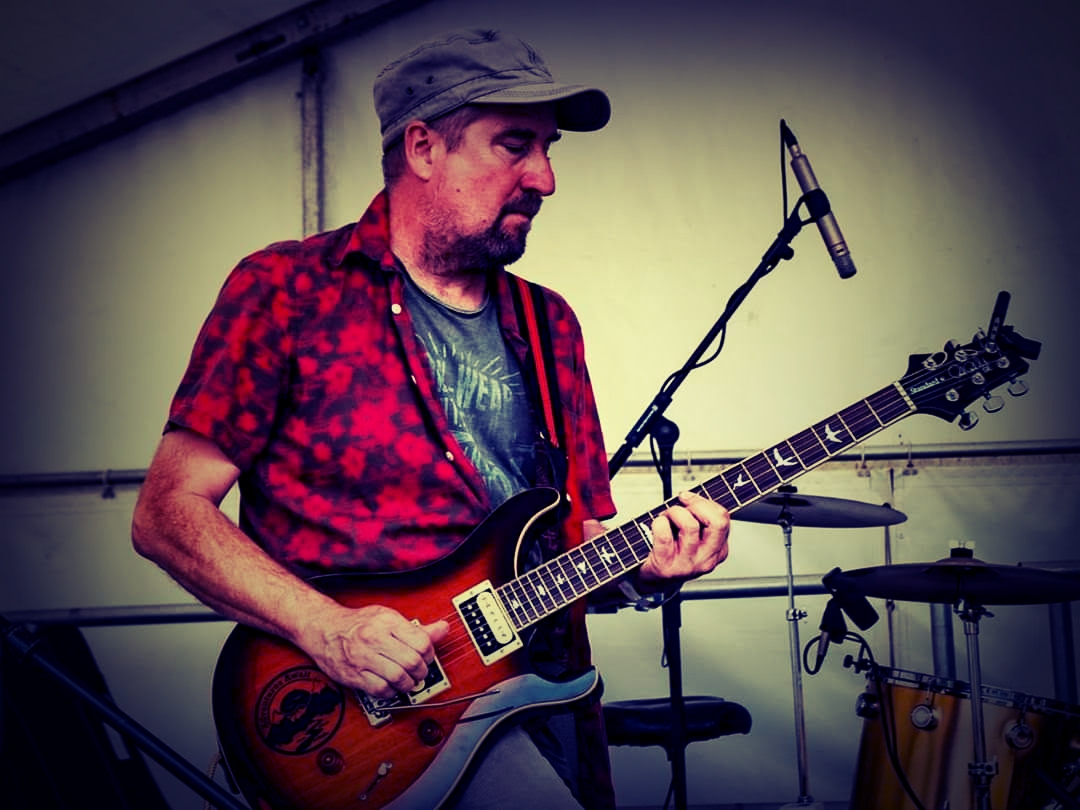
Thank you. Last word is yours.
Thank you Klemen for the opportunity to reflect and for spreading the message. Keep it psychedelic!
Why not check out Slithey Tove and The Green Ray on Bandcamp, Reckless Records and all the usual streaming services. Also, remember to BUY music folks and keep the industry viable for us musicians!
Klemen Breznikar
Headline photo: Slithey Tove in 1992 | Left to right; Aaron Liddard, Simon Whaley, Toby Baron, Conrad Winchester and Simon Burgin (front) | Photo by Doug Southall
Slithey Tove Facebook / Instagram / Bandcamp
The Green Ray Facebook / Bandcamp / YouTube
Reckless Records Official Website / Facebook / Instagram / Twitter
Sugarbush Records Official Website / Facebook / Twitter / YouTube

